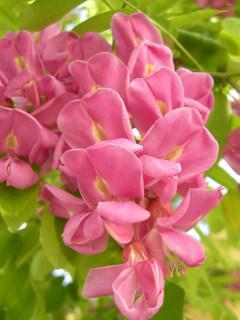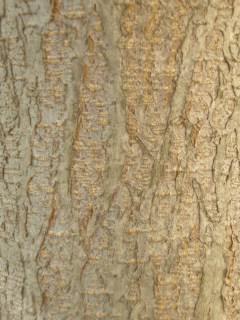
Robinia x ambigua ‘Idahoensis’ Flower (17/05/2012, Prague, Czech Republic)
Position: Full sun
Flowering period: Spring
Soil: Moist, well drained
Eventual Height: 12m
Eventual Spread: 8m
Hardiness: 4b – 9a
Family: Fabaceae
Robinia x ambigua ‘Idahoensis’ is a fast growing upright deciduous tree with a vase or columnar habit. Its leaves appear mid green and become blue green during the summer months, are odd pinnate, with its individual leaflets being up to 2cm long and 1.5cm broad. Before the leave fall in autumn, they turn yellow. Its fragrant purple/ pink flowers are typical of those found within this genus, up to 5cm tall and appear in clusters on pendant racemes.

Robinia x ambigua ‘Idahoensis’ (17/05/2012, Prague, Czech Republic)
Robinia x ambigua ‘Idahoensis’, commonly known as the Idaho Locust, is believed to be a cross between Robinia pseudoacacia and Robinia hispida. The habit being similar to R. pseudoacacia and the flowers being similar to those of R. hispida.
The etymological root of the binomial name Robinia is named after Jean Robin, a 17th century French botanist and herbalist to Henry IV and Louis XIII of France, and Vespasian Robin his son. Ambigua is from the Latin meaning ‘aambiguous, referring to its parentage.
The landscape architect may find Robinia x ambigua ‘Idahoensis’ useful as a small to medium sized street tree due to its tolerance of compacted poor soils. Once established this tree is drought tolerant.

Robinia x ambigua ‘Idahoensis’ Bark (17/05/2012, Prague, Czech Republic)
Ecologically, Robinia x ambigua ‘Idahoensis’ is attractive to pollinating insects, particularly bees.
Robinia x ambigua ‘Idahoensis’ prefers moist, fertile, well-drained soils. It tolerates most pH of soil. It will tolerate poor compacted soils.
Robinia x ambigua ‘Idahoensis’ requires little maintenance.

